Throughout history, poultices have been used to draw out infections, treat wounds, and heal aches. Many traditional poultices are made from natural herbs or even things like entire onions applied to sores. But, of these traditional remedies, almost nothing beats the drawing power of a charcoal poultice.
Today, hospitals sometimes use dressings impregnated with activated charcoal and silver to treat wounds. While it’s possible to buy these medical-grade charcoal dressings – such as the brand Dimora on Amazon, they are pretty pricey.
A cheaper alternative is to make a DIY activated charcoal poultice.
Uses for Activated Charcoal Poultices
Charcoal poultices work in situations where there is something unwanted in your skin or in situations where the skin is inflammed. This includes for treating:
Abscesses, cysts and boils
Mild skin infections
Bites or stings
Poison ivy or other plant rashes
Rashes
Arthritis
Instructions
Please note that you need activated charcoal for making a poultice, not regular charcoal. If you aren’t familiar with this, read:
- Difference between activated charcoal and charcoal
- Best brands of activated charcoal
- How to make activated charcoal at home
- How to store activated charcoal long-term
1. Spread Out Plastic
Activated charcoal can get really messy, especially if it spills. Make your life easier by putting out a sheet of plastic or an old towel.
2. Mix Activated Charcoal with Gelling Agent
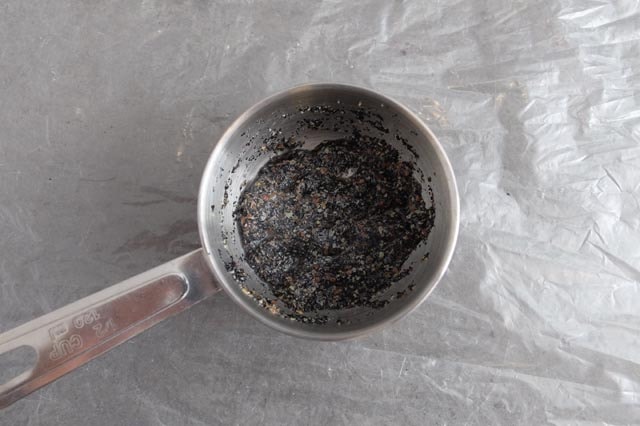
When mixed with just water, activated charcoal is a bit gritty and flaky. It also dries out fairly quickly. So, it won’t sit well in a poultice. Instead, you should mix the activated charcoal with something to make a gel.
Flaxmeal is great choice because it turns into a gel-like substance when mixed with warm water (sidenote: this is the same reason that flaxmeal is one of the best egg substitutes for baking).
To make the activated charcoal “gel”:
- Mix equal parts activated charcoal and flaxmeal
- Add just enough hot water to cover (I used 1 tsp. AC, 1 tsp. flaxmeal, and 3 tsp. water)
- Let sit for 5 minutes.
- The mixture should be gel-like. If it is too dry, add a splash more water. If it is too runny, add some more flaxmeal and AC.
If you don’t have flaxmeal, you can also use:
- Chia seeds
- Cornstarch
- Oil: Some oils, like castor, are also good for helping with swelling. However, oils make the charcoal poultice messy
3. Create a “Packet”
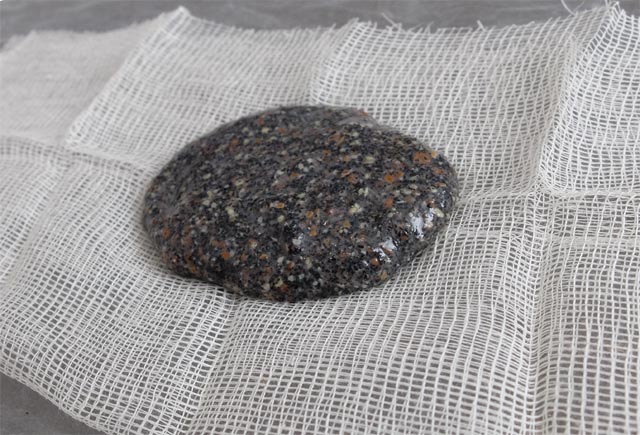
While you can apply activated charcoal directly to your skin, it’s generally not a good idea. The main reason is because it can get really messy. You will also have a hard time cleaning it off your skin. In situations where you are treating an infected skin wound, you may end up with bits of flaxmeal stuck in the wound.
Instead, you should make a little “packet” for your activated charcoal gel. You then apply the packet to the skin. The material for the packet needs to be strong enough to hold the gel, but also thin enough so the activated charcoal can seep through to the skin.
Some options include:
- Wound dressing/gauze
- Paper towels
- Empty teabag
- Cheesecloth
- Bath sachet bags
- Nylon pantyhose
Once you’ve chosen your material, simply put the activated charcoal gel into the middle of it. Fold up the sides to make a little packet. Alternatively, you can roll up the material to make a long, thin poultice.
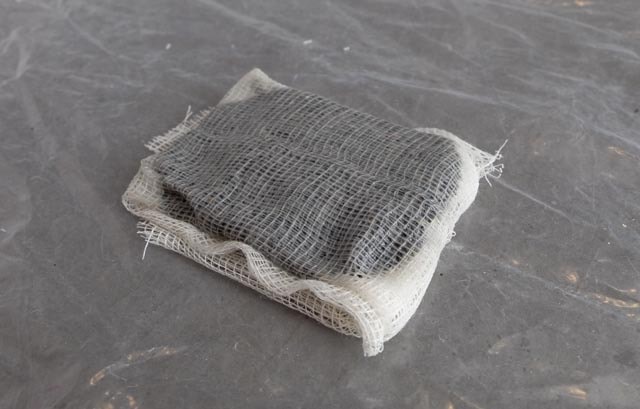
How big does the poultice need to be?
For the charcoal poultice to be effective, is should cover an area at least twice as big as the affected area. So, a poultice for a two-inch abscess would need to be at least 4 inches.
You’ll also want to make sure the poultice is thick enough. Aim for the charcoal layer to be at least ¼ inch thick. For more serious ailments, you’ll want to make it thicker and larger. When in doubt, make your poultice bigger.
4. Apply the Poultice
Put the charcoal poultice directly over the area being treated.
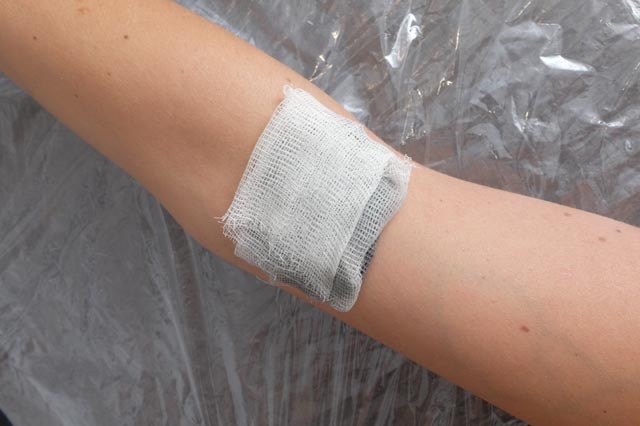
5. Cover with Plastic Wrap Keep it Wet
Activated charcoal works best when it is wet. To keep the activated charcoal from drying out, put a piece of plastic wrap over it. If the affected area is on a limb, go ahead and wrap the plastic wrap completely around the limb; this will keep things less messy.
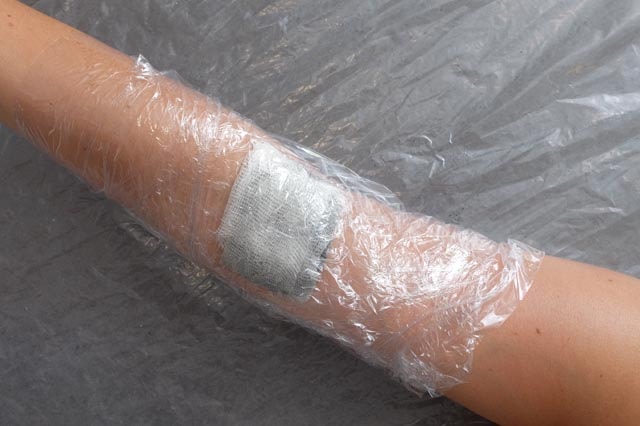
6. Secure Poultice in Place
Use an Ace bandage or medical tape to secure the charcoal poultice in place. Or, you can use a sock to secure a poultice over a limb; just cut the toe part off and use the remaining part to hold the poultice. Obviously, the sock needs to be clean.
How long should the charcoal poultice be in place?
As a general rule, poultices should be left on for 20 minutes to 3 hours. Poultices for unbroken skin (such as for insect bites, boils or abscesses which haven’t come to the surface yet) can be left on overnight.
You should be cautious about leaving a charcoal poultice on an infected wound or broken skin too long though. While wet dressings are considered better for wound healing, a wet dressing can collect bacteria and spread it to other parts of the body. You’ll need to change the poultice regularly.
How often should I reapply the poultice?
Most natural remedy experts recommend giving your skin a break before reapplying a poultice. The consensus seems to be to wait for the same amount of time as you applied the poultice. So, if you had the charcoal poultice on for 3 hours, wait 3 hours before reapplying.
7. Apply Heat or Coldness (Optional)
For certain types of ailments – particularly abscesses and cysts – the poultice should be hot. The heat will help draw pathogens to the surface of the skin and allow it to drain. Other types of ailments are better off with a cold poultice though, such as when you need to reduce pain or quell inflammation.
Some people recommend putting the poultice into a steamer to heat it up or into the freezer to cool it down. Those methods only work if you used a sturdy dressing for making your poultice (a paper towel will disintegrate too quickly).
Instead, I recommend draping a hot or cold towel over the poultice. Have additional hot or cold towels waiting so you can switch them up.
https://www.irishtimes.com/life-and-style/health-family/poultices-the-moist-cure-all-that-came-to-a-sticky-end-1.3798036https://www.everydayhealth.com/diet-nutrition/activated-charcoal-functions-benefits-risks-where-to-buy/
https://www.medicalnewstoday.com/articles/322609#possible-uses
https://bushcraftusa.com/forum/threads/poultices.225013/
http://michaelvertolli.blogspot.com/2013/03/applying-poultice.html
https://www.jurassiccarbon.com/blogs/news/12186281-the-history-of-activated-carbon
https://not-the-norm.com/blogs/news/77933124-charcoal-an-ancient-remedy
https://www.ncbi.nlm.nih.gov/pmc/articles/PMC1420733/
https://www.normanregional.com/blog/8-tips-to-wound-healing
https://int.hansaplast.com/articles/health-and-protection/moist-wound-healing
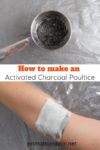


Does this help with athletes food?
In theory, it should help fight fungal infections. But, honestly, I would use an FDA-approved antifungal for athlete’s foot. Despite how much they get hyped up, a lot of natural remedies simply don’t work as well or fast as the pharmacy stuff.
Try ozonated sunflower oil. I wouldn’t have believed it either, but it absolutely works.
Never heard of that before. Thanks for the tip!
Once again I want to thank you for sharing this great information. My family and I have been practicing making water filters using AC , sand.rocks and clean cloths. Keep up the good work and thanks again.
Marsha
I believe that natural remedies do not work as well as or as fast as pharmacy stuff is because the natural remedies are not concentrated enough which, I believe, would make natural remedies much more effective. It is past time for the medical establishments to pay more attention to natural remedies.
They don’t want to pay attention to natural remedies and have taken great effort to have them removed from older medical texts, check out texts starting in the late 1800s and going back if you’re interested. The reason that they aren’t interested is because they cannot put a patent on a plant. We don’t really want that to happen either because if it did , then the rest of us wouldn’t have free access to the plants in question anymore.